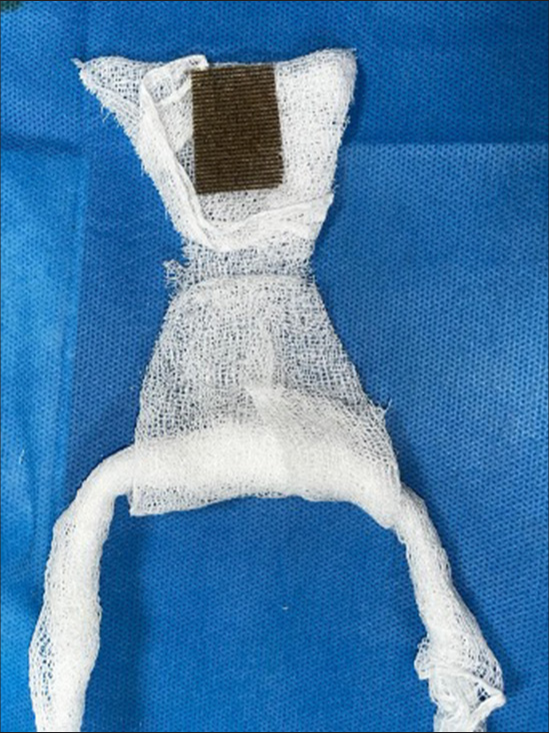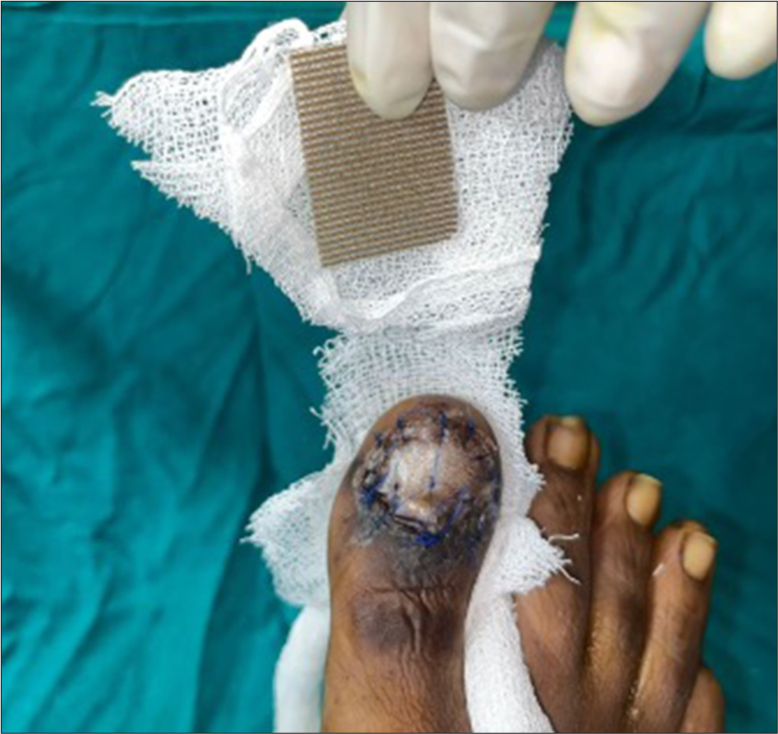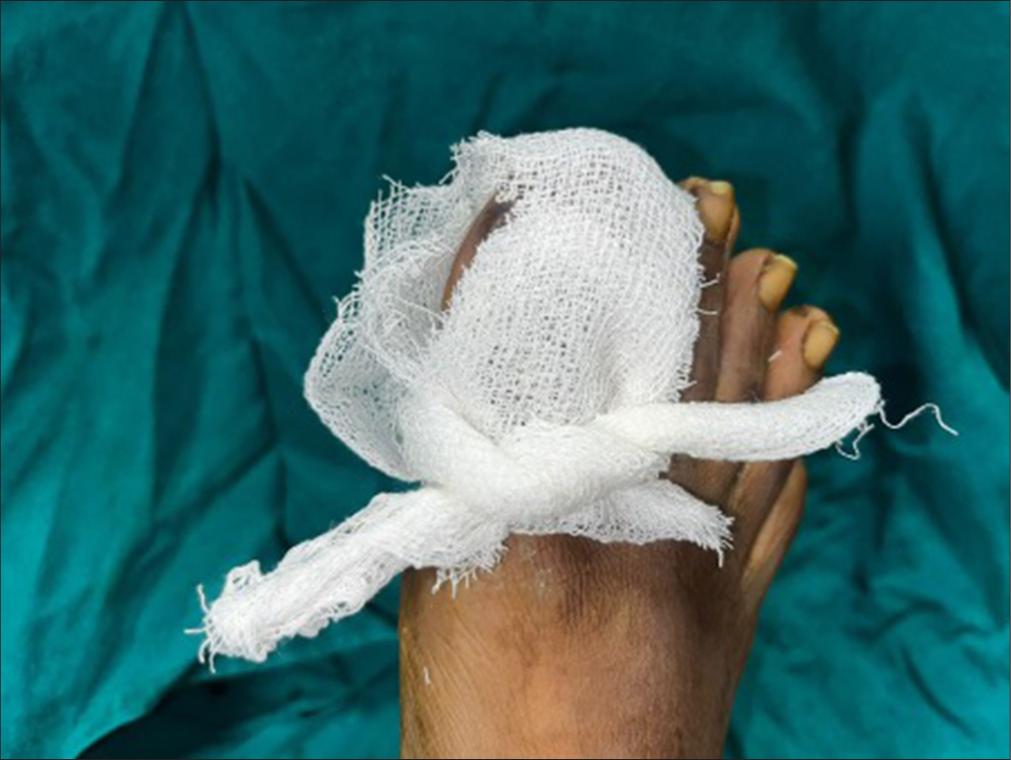Translate this page into:
A simplified technique for the stability of digit dressing

*Corresponding author: Ravi Kumar Chittoria, Department of Plastic Surgery and Telemedicine, Jawaharlal Institute of Postgraduate Medical Education and Research, Puducherry, India. drchittoria@yahoo.com
-
Received: ,
Accepted: ,
How to cite this article: Kumar R, Chittoria RK. A simplified technique for the stability of digit dressing. CosmoDerma. 2025;5:8. doi: 10.25259/CSDM_195_2024
PROBLEM
Traumatic injuries involving the fingertips or toe tips are among the most frequently encountered hand and foot emergencies.[1] These injuries often necessitate stable dressings, regardless of whether they are managed conservatively or surgically.[2] Dressing such wounds poses a particular challenge, especially in pediatric patients, as dressings can easily dislodge, leading to wound exposure and an increased risk of infection. It is essential that the dressing remains secure, protects the wound from external factors, and allows finger or toe mobility.[3] This article introduces a modified version of the technique initially described by Mukhtar for managing fingertip injuries in the post-operative period.[4]
SOLUTION
After the procedure is completed for fingertip, toe tip or nail injuries, a non-adherent dressing material measuring twice the length of the operated digit, is placed over a layer of absorbent gauze. The dressing is then modified by making V-shaped cuts on opposite sides, facing laterally away from one another. A gauze strip is threaded through one end of the dressing, which is placed beneath the affected finger or toe [Figure 1]. The other end is folded over the tip to cover the treated area [Figure 2]. The gauze strip is then secured circumferentially at the base of the finger or toe, ensuring the distal end of the dressing is held firmly in place. The knot is tied just tightly enough to keep the gauze securely in place on both sides [Figure 3]. The inner layer prevents the wound from adhering to the gauze, while the outer layer absorbs any wound discharge. Negative pressure wound therapy can also be applied to further secure the dressing and prevent exudate accumulation. This modified dressing technique ensures the dressing remains in position while providing multiple layers to aid in wound healing and absorb exudates effectively.

- A non-adherent dressing material is placed over a layer of absorbent gauze. V-shaped cuts are made on opposite sides, facing laterally away from one another. A gauze strip is threaded through one end of the dressing.

- One end is placed below the digit.

- The string is secured at the base including the distal end.
Authors’ contributions
RVK: Preparation of the manuscript, collection of data, interpretation of data. RKC: Critical review.
Ethical approval
The Institutional Review Board approval is not required.
Declaration of patient consent
The authors certify that they have obtained all appropriate patient consent.
Conflicts of interest
There are no conflicts of interest.
Use of artificial intelligence (AI)-assisted technology for manuscript preparation
The authors confirm that there was no use of artificial intelligence (AI)-assisted technology for assisting in the writing or editing of the manuscript and no images were manipulated using AI.
Financial support and sponsorship
Nil.
References
- Management of hand injuries: Part II. Adv Emerg Nurs J. 2016;38:266-78.
- [CrossRef] [PubMed] [Google Scholar]
- Ingrown toenails. Indian J Dermatol Venereol Leprol. 2012;78:279-89.
- [CrossRef] [PubMed] [Google Scholar]
- Y-shaped anchor for nail dressing stability. J Am Acad Dermatol. 2024;90:e159-61.
- [CrossRef] [PubMed] [Google Scholar]
- Surgical pearl: The “dumbbell” technique: An attempt to simplify nail dressing. J Cutan Aesthetic Surg. 2024;17:337-9.
- [Google Scholar]






